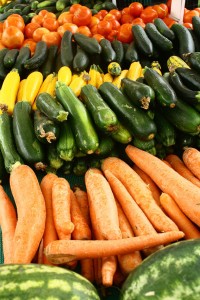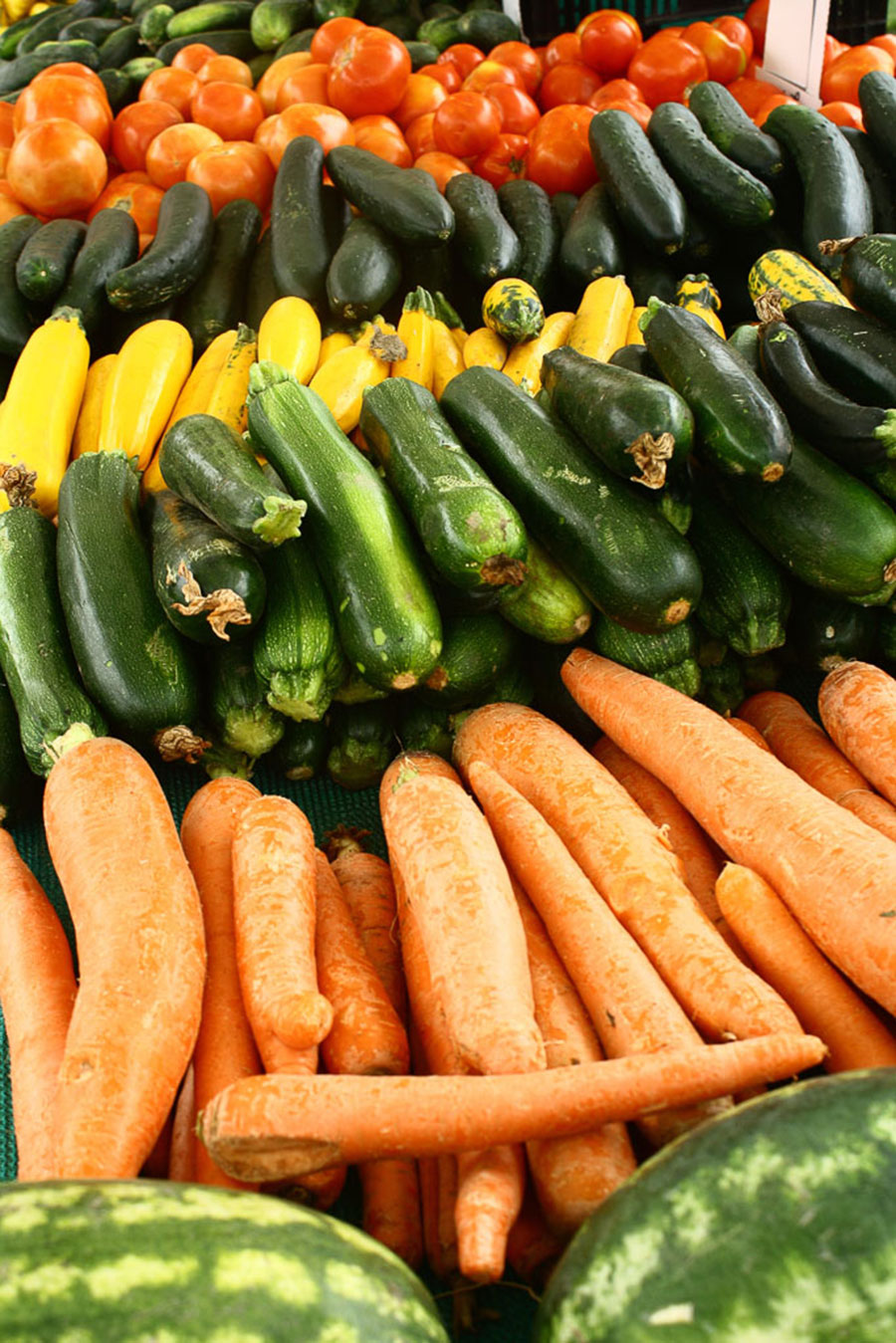Figuring out farm-to-table food
There are few activities that excite me more than going to the farmers market. What began as an occasional outing in high school has grown into a beloved weekend ritual that I look to for inspiration and community. As I have become more conscientious of where my food comes from and what goes into it, I have developed greater admiration for local farmers and the work they do.

Farm fresh · Farm-to-table food isn’t simply the latest passing trend, the food tastes better and reach their nutritional peak soon after harvest. – Maral Tavitian | Daily Trojan
Though some might regard the concept of farm-to-table food as a fad, eating honestly grown, local and seasonal produce offers many benefits. Not only does it taste better, but most fruits and vegetables reach their nutritional peak around the same time they ought to be harvested. In contrast, grocery store produce often travels thousands of miles before hitting the shelves, meaning that it was picked well before it was ready to be consumed. These factors are especially important for college students looking to embrace a more balanced, healthy diet.
Though farmers markets are at their prime during the summer, the stalls filled with piles of vibrant stone fruits and plump heirloom tomatoes, fall brings its own bounty of beautiful produce. In this guide, I have shared my tips for how to best navigate the farmers market as a college student. Shopping for one requires a different approach than buying for an entire family. Learning how to strategically select items will allow students to maximize their time and money spent, both at the market and in the kitchen.
Sample with discretion.
Everyone loves free food, especially budget-strapped college students. While there is no better way to determine a product’s quality than to sample it, it is important to avoid a state of palate overload. If you try too many items, all the flavors will meld together, and you will forget which fruits reigned supreme. So despite your urge to stick a toothpick into every sample, only taste items that you intend to purchase.
Choose produce wisely.
The farmers market is a one-stop shop for your weekly supply of fresh produce. Since college students mostly cook for themselves, it is important to select items that will stay fresh throughout the week and easily transform into meals. Fall offers a wonderful variety of sturdy fruits and vegetables such as apples, carrots, squash and zucchini. Unless you plan on consuming it immediately, steer clear of produce with a short life span, such as berries and tomatoes. If vegetables have begun wilting and are unappealing raw, roasting then storing them in the refrigerator is a simple solution that I rely on often.
Get to know your vendors.
The farmers market offers a unique opportunity to build relationships with the people who grow your food. Do not be shy about asking questions; not only will you learn valuable information about harvesting practices and production, but you show your appreciation for the farmers work. Many farmers will offer discounts to loyal customers or throw in special products for you to try for free. Unlike the sterile environment of major grocery stores, these personal interactions create a more intimate, community-oriented experience.
Look for healthy snacks.
Studying for exams would not be the same without snacks. Though fresh fruits and vegetables are ideal for munching, the farmers market also offers great prepared foods. Hummus, mixed nuts and dried fruits are healthy options that will energize you to get through a late-night study session. Stocking up on Mediterranean-style olives, feta cheese and whole wheat pita bread also makes for a quick and easy dinner when you are pressed for time.
Spinach Salad with Apples and Cranberries
This simple salad allows you to transition into the season without turning on the oven and is an ideal way to incorporate apples into a savory meal. You can use any variety of apples, but I prefer Pink Lady or Fuji for a bit of sweetness.
• 3 cups baby spinach
• 3/4 cup diced apple, from about 1 small apple
• 1/2 cup dried cranberries
• 1/4 cup crumbled goat cheese
• 1/4 cup candied pecans, coarsely chopped
• Salt and pepper
For the balsamic vinaigrette:
• 1 teaspoon lemon juice, from half of a small lemon
• 1 teaspoon Dijon mustard
• 1 tablespoon balsamic vinegar
• 1 tablespoon olive oil
• Salt and pepper
Total: 15 min. Serves two.
1. In a large serving bowl, lightly toss together spinach, diced apples, cranberries, goat cheese, pecans and a good pinch of salt and pepper. In a small bowl, mix together the lemon juice, mustard and vinegar. Slowly drizzle in the olive oil, whisking constantly. Season with a pinch of salt and pepper. Pour over salad and toss to make sure everything is coated. Serve.
Maral Tavitian is a sophomore majoring in print and digital journalism. Her column, “The Epicurean Dorm,” runs Tuesdays.

